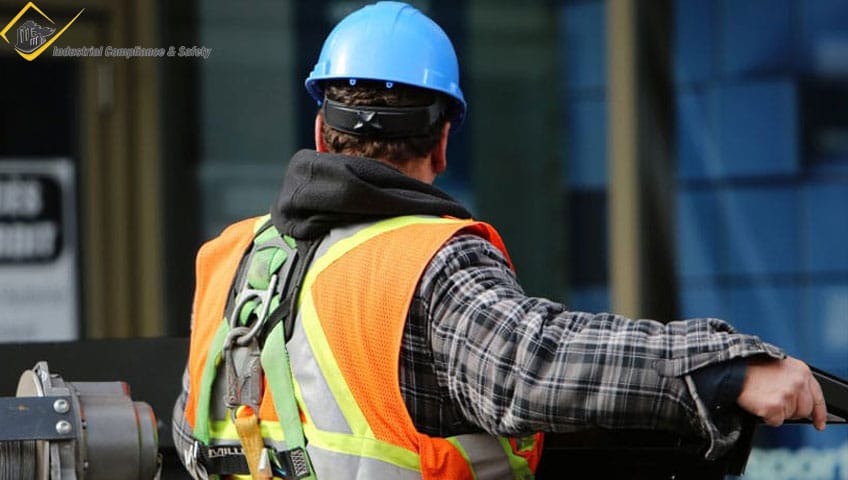In Mexico's bustling industrial scene, keeping workers safe is a top priority. With various industries like manufacturing and construction buzzing with activity, it's beneficial to have robust safety training programs in place. These safety programs not only arm workers with essential skills to handle risks but also foster a culture of safety across workplaces.
When it comes to ensuring workplace safety, Industrial Compliance & Safety (ICS) services are the go-to experts. We provide essential guidance, resources, and expertise to help industrial companies and contractors implement effective safety training programs for their Mexican workforce. From navigating regulations to tailoring training solutions, ICS is instrumental in creating safer workplaces and prioritizing employee well-being.
The Foundation: Robust Safety Programs
All effective workplace safety programs start with the same key element, a solid program foundation. Workplace safety programs cover a lot of ground, from spotting hazards to knowing what to do in an emergency, how to handle equipment safely, and even how to set up workspaces for comfort and safety. Each piece of the puzzle helps workers stay informed and prepared for whatever comes their way.
In the ever-changing world of industrial work, safety rules and safety training programs need to keep pace. That means regularly updating protocols to reflect new technologies, regulations, and industry-specific risks. Whether it's adapting to new tools, following the latest rules, or addressing unique challenges in the field, staying current ensures that workers are always equipped to handle whatever the job throws at them.
Key Components Of Strong Safety Programs
A good workplace safety program typically consists of several key components designed to ensure the well-being of employees and promote a culture of safety within the organization. Some common components include:
- Safety Policies and Procedures: Clearly defined safety policies and procedures establish expectations for employee behavior and outline the steps to follow in case of emergencies or accidents.
- Hazard Identification and Risk Assessment: Regular assessments help identify potential hazards in the workplace and evaluate the associated risks. This allows for the implementation of appropriate control measures to mitigate risks.
- Employee Training and Education: Comprehensive training programs ensure that employees understand safety protocols, procedures, and the proper use of equipment. Training should cover topics such as hazard recognition, emergency response, and safe work practices.
- Safety Equipment and Personal Protective Gear: Providing employees with the necessary safety equipment and personal protective gear, such as hard hats, gloves, goggles, and respirators, helps minimize exposure to hazards and reduce the risk of injuries.
- Incident Reporting and Investigation: Establishing procedures for reporting and investigating incidents allows organizations to identify the root causes of accidents or near misses and implement corrective actions to prevent similar incidents in the future.
- Safety Communication: Effective communication channels, such as safety meetings, toolbox talks, and signage, ensure that safety information is consistently conveyed to employees at all levels of the organization.
- Emergency Preparedness and Response: Developing emergency response plans and conducting drills help employees respond effectively to emergencies, such as fires, natural disasters, or medical emergencies.
- Safety Committee or Representative: Establishing a safety committee or appointing safety representatives allows employees to actively participate in identifying safety concerns, proposing solutions, and promoting safety initiatives.
- Continuous Improvement: Regular evaluation and review of the safety program help identify areas for improvement and ensure that the program remains effective and up-to-date with changing workplace conditions, regulations, and best practices.
Tailoring Workplace Safety Training to Specific Industry Needs
Workplace safety training can be and should be tailored to fit the unique needs of different industries in Mexico. Mexico's industries are as diverse as they come, and that means different training needs for different businesses. Contractors working with manufacturing will have very different potential hazards and training needs from contractors working with oil and gas. For example, Mexican industry workers on the factory floor might need training on how to handle machines safely, while those in oil and gas need to know all about dealing with hazardous materials and emergency responses. It is beneficial to consider the unique needs of each industry sector and create workplace safety programs that meet those workers' needs.
Safety Training Needs for Different Mexican Industrial Sectors
Manufacturing Sector
- Machinery Safety: Training on the safe operation and maintenance of machinery and equipment.
- Hazardous Material Handling: Instruction on the proper handling, storage, and disposal of hazardous materials commonly used in manufacturing processes.
- Lockout/Tagout Procedures: Education on procedures for locking out and tagging out machinery during maintenance to prevent accidental startup.
Construction Sector
- Fall Protection: Training on the proper use of fall protection equipment and techniques to prevent falls from heights.
- Scaffolding Safety: Instruction on the safe erection, use, and dismantling of scaffolding to prevent collapses and falls.
- Electrical Safety: Education on the hazards of working with electricity and methods for preventing electrical accidents.
Oil and Gas Sector
- H2S Awareness: Training on the detection, hazards, and safe handling of hydrogen sulfide gas, which is commonly encountered in oil and gas operations.
- Confined Space Entry: Instruction on the risks associated with confined spaces and procedures for safe entry, rescue, and work within confined spaces.
- Fire Safety: Education on fire prevention measures, firefighting techniques, and the use of fire extinguishing equipment.
Transportation Sector
- Defensive Driving: Training on defensive driving techniques to reduce the risk of accidents and injuries while operating vehicles.
- Load Securement: Instruction on the proper methods for securing loads to prevent shifting, falling, or spilling during transportation.
- Hazardous Materials Transportation: Education on the regulations and procedures for the safe transportation of hazardous materials by road, rail, or air.
Leveraging Industrial Compliance and Safety Services for Effective Safety Program Implementation
At Industrial Compliance & Safety, we've got a whole arsenal of global services designed to make safety program implementation a breeze. From comprehensive safety audits to tailor-made training sessions, we've got everything you need to get your safety program up and running smoothly. Our team of safety experts is here to guide you every step of the way, ensuring that your program is not just effective but also compliant with all the latest regulations. We specialize in supporting contractors across the globe with the ins and outs of ISNetworld®, Avetta®, and all the other large and small certification systems out there.
Our expert safety consultants proudly serve the following industries:
- Oil and Gas Safety Certification Programs
- Energy and Utilities Industry Safety Programs
- Chemical Safety Compliance Manuals & Programs
- Manufacturing Safety Compliance Programs
- Construction Safety Compliance Programs
- Mining Safety Certification Manuals & Programs
- Telecommunications Safety Manuals & Programs
- Trucking & Transportation Safety Compliance
Contact Industrial Compliance & Safety today to get started with your tailored safety training programs.
Ready To Get Compliant Today?
Call us or complete the form below!





